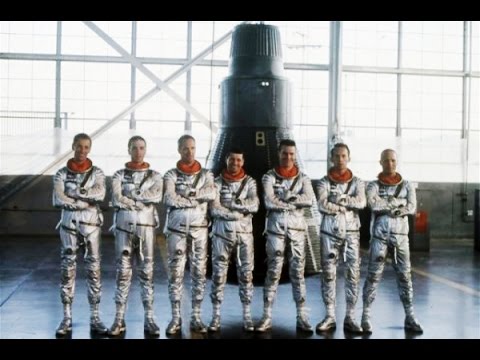The Right Stuff by Tom Wolfe was on my to-read list for a very long time. Finally, I managed to read it, and it landed on my all-time-favorite bookshelf. The book tells stories behind the Mercury space program: crew member selection, technical flight specifications, human aspect of space travel, astronauts’ fame and recognition. Here are my notes to remember:
 The Right Stuff (1983)
The Right Stuff (1983)
Space programs
Project Mercury (1958 - 1963) was the first human spaceflight program of the USA, which goal was to put a man into Earth orbit and return him safely.
Project Gemini (1961 - 1966) developed space travel techniques to support the later Apollo missions: working outside the spacecraft, space rendezvous, docking, prolonged exposure in space.
Apollo (1960 - 1972) was the third human spaceflight program carried out by the NASA, which accomplished landing the first humans on the Moon. I wrongly thought that the Apollo program was supported all the way by John Kennedy (killed in 1963). Dwight Eisenhower’s administration started it, and the Apollo preparation works happened under Lyndon Johnson watch (in the president office until 1969).
The first joint U.S. - Soviet space flight happened in 1976, and it involved docking of an Apollo command module with the Soviet Soyuz, Apollo-Soyuz Test Project.
First astronauts were monkeys and apes
Very rigorous and inhumane treatment, using electrodes attached to their feet to train.
NASA was selecting the healthiest individuals, training them until one could perform all procedures inside the spacecraft no worse than a human.
Human pilots’ (astronauts) early role
U.S. administration decided to involve and train test pilots (e.g., ones trying to break the sound barrier).
Test pilots were already used to high risk, and chances of dying during an experimental flight were high.
They were adrenaline addicts: between the flights raced a lot with cars on public roads.
Initially, the pilots were supposed to be a computer backup, in case if machine failed to proceed on its own.
Pilots recruitment and simulations
NASA pre-select the most stable pilots psychologically pilots and run experiments and tests on them to prepare for the unknown. They should accept the risks, but not be driven to get more adrenaline.
Future astronauts were trained in a similar environment as they would get exposed to in space (movements, voices).
Pilots were expected to pitch in in case of computer failure and take manual control only then.
After being exposed to many scenarios, during the real flight pilots’ heart rate was not exceeding 150 bps.
After the trip
Americans were truly afraid of Russians. Sputnik and possible atomic weapons in space aimed at the U.S. frustrated everyone. Astronauts, in the eyes of an American, were soldiers to fight Russians in space.
Pilots became real heroes. NASA organized welcoming events in the biggest U.S. cities.
Experimental or military pilots didn’t earn much, they lived quite poorly. Financials changed a lot for them after becoming astronauts.
